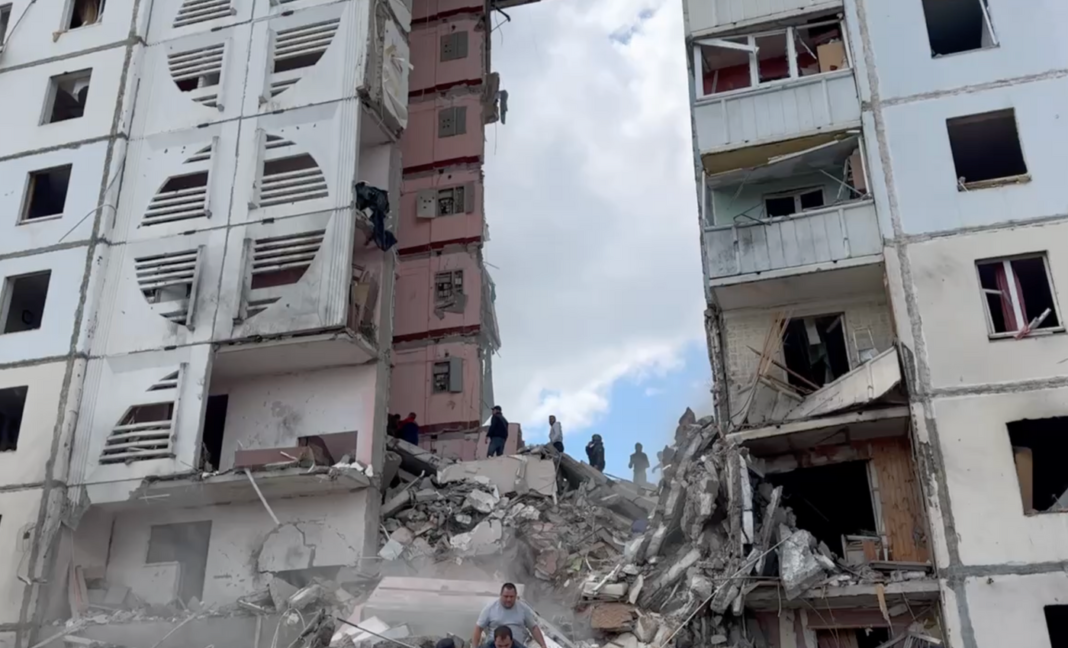The Conflict Intelligence Team (CIT) investigation group called the version of the Russian Ministry of Defense that the entrance to a high-rise building in Belgorod on May 12 destroyed a fragment of a downed Ukrainian Tochka-U missile as unlikely. This version was outlined by CIT founder Ruslan Leviev in a daily military report on Michael Naki's YouTube channel.
“The version that the missile from the Ukrainian Tochka-U could have changed its trajectory under the influence of an air defense missile in such a way as to strike from this side of the house, it seems unlikely to us,” Leviev emphasized.
Having studied and analyzed photos and videos from Belgorod, OSINT investigators came to the conclusion that it was highly likely that the house was hit from the northeast. According to Leviev, this direction of impact is also proven by damage to the windows: they were knocked out on the northeastern (external) side of the house and remained intact on the southwestern (internal) side.
The reason people aren't seeing a projectile or bomb on this video is not because it is a “false flag demolition”
The camera looking at the south-western side of the building and the explosion was likely caused by a failed Russian glide bomb impacting the north-eastern side. https://t.co/Q0VKG1ZUuZ pic.twitter.com/BPa66Lht1B
— Oliver Alexander (@OAlexanderDK) May 12, 2024
CIT is inclined to believe that it was either an anti-aircraft guided missile from a Russian air defense system, or an abnormal derailment of an aircraft bomb (FAB-500 ) from the universal correction and planning module (UMPC), Leviev said.
“One of the most obvious versions is a hit by an anti-aircraft guided missile, for example, from the S-300 complex. Characteristic traces of the scattering of fragments may not be visible due to the scale of the collapse. We admit that the warhead of such a missile may be enough to collapse the entrance,” the investigator explained.
Leviev noted that the high-explosive part of an aerial bomb can undoubtedly cause such large-scale destruction, while “cases of aerial bombs falling on Belgorod and the region are not uncommon.”
“It is still impossible to establish for sure what kind of ammunition hit the house, but most likely this happened due to the actions of the Russian side,” concluded the founder of CIT.
 The entrance to a multi-storey residential building collapsed in Belgorod
The entrance to a multi-storey residential building collapsed in Belgorod
The day before in Belgorod, in house No. 55A on Shchorsa Street, the entrance to a ten-story residential building completely collapsed. Initially, Governor Vyacheslav Gladkov wrote that the building was hit by an Ukrainian Armed Forces shell. However, the Russian Ministry of Defense immediately after this reported that the entrance was “damaged by fragments of one of the downed Tochka-U missiles.”
During the search work, the roof of the house partially collapsed, and the operation was interrupted several times due to missile warning signals. By the morning of May 13, the bodies of 15 dead were pulled out from under the rubble. The exact number of victims is unknown; Gladkov reported that on May 12, 27 people were injured in the city.


